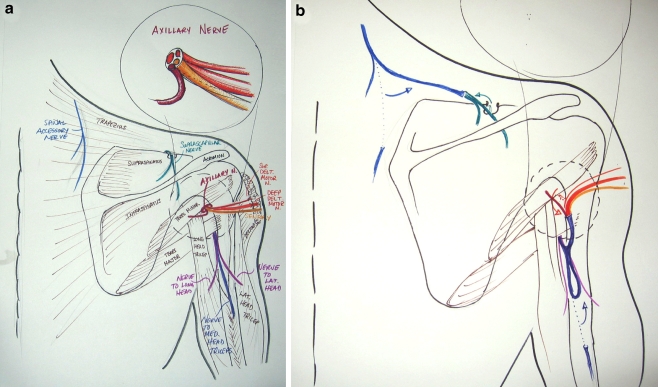Figure 2.
(a) Posterior approach for double nerve transfer for shoulder function; posterior shoulder anatomy. Note that the posterior approach allows access to the more distal aspect of the spinal accessory nerve. The suprascapular nerve passes over the suprascapular notch beneath the superior transverse scapular ligament. The inset shows the components of the axillary nerve at the level of the quadrangular space. Note that the larger motor branch to the deltoid comprises the deep aspect of the nerve, whereas the other smaller components, including the nerve to teres minor and the sensory component (superior brachial cutaneous), comprise the superficial aspect of the nerve. The nerve branch to the medial head of the triceps is found along with the radial nerve deep to the interval between the long and lateral heads of the triceps muscle overlying the humerus. (b) Posterior approach for double nerve transfer for shoulder function, following nerve transfer. The distal spinal accessory nerve has been transected as distally as possible and the proximal segment transferred to the distal segment of the suprascapular nerve, which has been transected just proximal to the suprascapular notch. The branch to the medial head of the triceps has been transected distally and the proximal segment transferred to the distal segment of the axillary nerve. The axillary nerve has been transected as proximally as possible in the quadrangular space. The nerve to teres major is included as a recipient in the transfer and no special effort is made to exclude the sensory branch of the axillary nerve (superior brachial cutaneous nerve).

